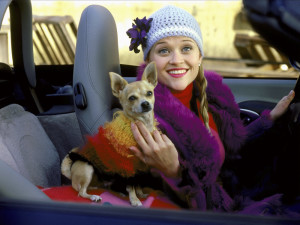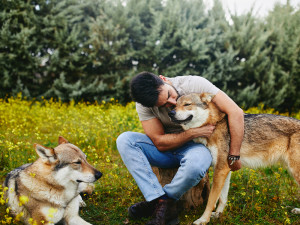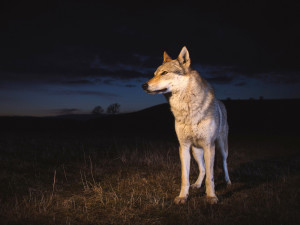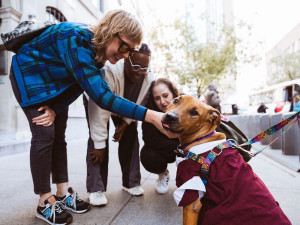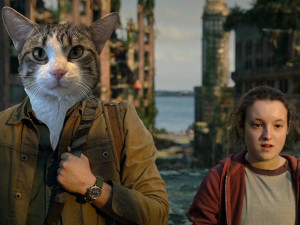Why You Shouldn’t Get a Dog Breed Because You Saw It in a Movie
The John Wick franchise’s latest installment could pose a real threat to Belgian Malinois.

Share Article
There’s a reason why most people get more upset when a dog dies in a movieopens in a new tab than when a person does. In a few words, it hits different. We understand pets are generally our better halves and act accordingly. Unfortunately, the flip side of this cinematic coin can present real-life issues for some pups. There is a long history of film and television adversely affecting the adoption rates of breeds whose personalities and needs do not reflect how they’re presented on screen.
This, in turn, leads to mass pet surrenders opens in a new taband eventually overcrowding in shelters. Now, some experts fear history is repeating itself thanks to “The Boogeyman” himself, John Wick. The latest in the franchise, John Wick: Chapter 4, debuted in theaters in March and just became available on streaming in late May.

littleKin™ is Kinship’s home just for puppy and kitten parents. Bop over to check out expert advice, new pet tools, and special deals—all curated for your newest family member.
opens in a new tabThe John Wick Problem
In the film, there is a new character introduced, eloquently named Mr. Nobody, who is an elite tracker permanently accompanied by a loyal and handsome Belgian Malinois. For those unfamiliar, this is a larger breed known for their perked-up ears, long dark snout, and slightly bushy tail. So he’s got sort of a Norman Reedus in The Walking Dead-type vibe, if showers were ever on the table in that world. It’s an admittedly cool concept except for the fear that the clout might ultimately result in demand for the breed. Saharai Salazar, trainer and owner of Wolfmother K9 Rescue Servicesopens in a new tab, took to Instagram to warn against the impending trend.
“These magnificent dogs will inevitably suffer in the hands of backyard breeders and inexperienced owners as their popularity soars,” she wrote in a postopens in a new tab. “Please, research your breeds extensively and be honest with the limitations in your lifestyle, work schedules, experience with specific drives and ability to meet the needs of every breed, especially those that require more than the average family dog.”
The major concern stems from common breed traits of the Belgian Malinois. Just like Dalmatians or Huskies, these dogs require unique care and accommodation that not everybody can provide. According to the AKCopens in a new tab, Belgian Malinois are incredibly intelligent and devoted dogs. However, they are equally athletic and need much more physical and mental stimulation than the average pup. In short, a couple of walks each day aren’t going to cut it. Additionally, the breed has an extremely high prey drive and tends to gravitate toward moving objects. This can often manifest by chasing cars, other animals, and even children which means that hands-on, committed training is a must.
The 101 Dalmatians Factor
The main concern here is that people aren’t doing their research before seeing a film or TV show with a dog they love, then setting out on a mission to bring one home. This issue first saw legitimate media attention following Disney’s 1996 release of the live-action 101 Dalmatians. The film resulted in two widely felt responses from the general public. First, this was the moment society realized that Glenn Close could make literally any part work, even a canine-thieving gonzo cartoon character. But more crucially, it led to a mass demand for Dalmatians.
After the film hit theaters, children across the country were begging their parents for one of those adorable goofballs they saw in the movie. The following year, The New York Times opens in a new tab a substantial uptick in abandoned Dalmatians suffering in shelters. This was likely the result of two combined factors, beginning with breeders and puppy mills capitalizing on the sudden demand, but also new pet parents not truly realizing the actual characteristics and requirements of the breed prior to introducing them to the family.
Leslie Isom, a spokesperson with the Humane Society of the United States at the time, expressed the organization’s displeasure with this development. She then added that Dalmatians have specific needs and are not always well-suited for homes with children. “This is exactly what we had feared…What we’re trying to get across is that Dalmatians require a tremendous amount of time and energy and these are things that a family with small children may not have,” Isom told The New York Times in 1997.
Peter Dinklage Wants You to Think Again, Please
These days, as more fan-favorite content continues to be produced at record-speed, this problem has only seemed to ramp up. A few years ago, HBO juggernaut Game of Thrones created a similar phenomenon with its use of Huskies on the show. Shelters across the states started reporting such a large amount of recurrent Husky abandonments that it even inspired one of the show’s leads to intervene. In 2018, Peter Dinklage teamed up with PETA to implore viewers to give these dogs more thought before bringing one into their lives.
“Not only does this hurt all the deserving homeless dogs waiting for a chance at a good home in shelters, but shelters are also reporting that many of these Huskies are being abandoned — as often happens when dogs are bought on impulse, without understanding their needs,” the actor, who portrayed Tyrion Lannister for eight seasons, said in a statementopens in a new tab. “Please, please, if you’re going to bring a dog into your family, make sure that you’re prepared for such a tremendous responsibility and remember to always, always, adopt from a shelter.”
There’s an Old Pattern Here
In fact, research suggests this issue may have persisted for nearly a century. Three researchers from the University of Bristol, the City University of New York, and Western Carolina University conducted a study in 2014opens in a new tab to determine film’s overall influence on breed popularity. The trio examined a total of 87 movies featuring dogs in prominent roles released as early as 1927 and as late as 2004. They then compared when each arrived in theaters with American Kennel Club (AKC) records to evaluate if the starring animal caused an increase in similar breed registrations. What the team found was a significant uptick in breed popularity correlating with the success of each film. In certain cases, this boost was felt for a decade after the flick was released.
That said, this shouldn’t necessarily deter you from adopting, say, a Belgian Malinois if you’ve given it the proper thought. But Salazar still recommends fostering one first. This will give you a better idea of the breed’s temperament and if they’re a good fit in your life before committing long-term. “Remember, adoption is a lifelong responsibility, but fostering is temporary (and free!),” she added in her post. And, as always, if you’re looking for a specific breed, remember that breed-specific rescues opens in a new tabare a great option.
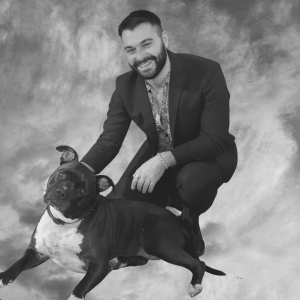
Sean Zucker
Sean Zucker is a writer whose work has been featured in Points In Case, The Daily Drunk, Posty, and WellWell. He has an adopted Pit Bull named Banshee whose work has been featured on the kitchen floor and whose behavioral issues rival his own.
Related articles
![Hybrid Czechoslovakian Wolfdog rescue sanctuary]() opens in a new tab
opens in a new tabWolfdog Sanctuaries Are Stressed
Ownership of wolf-dogs is on the rise putting animals are in danger.
![anonymous woman pampering and taking care about a small ginger kitten]() opens in a new tab
opens in a new tab6 Ways to Help Local Shelters Without Committing to Full-Time Pet Parenthood
Learn how you can be there for animals in need this National Pet Day.
![Bowie's Law]() opens in a new tab
opens in a new tabThe Newly Proposed “Bowie’s Amendment” Needs Your Support
This potential legislation could save the lives of countless shelter dogs. Here’s how you can help.
![Group of young people pet a brown dog with a jacket on outside.]() opens in a new tab
opens in a new tabHow DIY Animal Rescuers Tell The Exhausting, Rewarding Stories of Their Work
In volunteers’ Instagram videos, you’ll see both the joy and the fatigue behind finding these deserving pets homes.
![a person with short blonde hair and glasses hugs three rescue puppies and kisses one on the head]() opens in a new tab
opens in a new tabWhere Have All the Fosters Gone?
This is the Paula Cole parody that rescue orgs are singing as they struggle to find people to foster pets.
![Photoshopped crop of a cat edited on top of actor Pedro Pascal’s body, next to actor Bella Ramsey in “The Last of Us”]() opens in a new tab
opens in a new tabThe Unbearable Weight of Massive Cuteness
How a rescue cat named Pedro Pspspscal went viral and found a new home.
